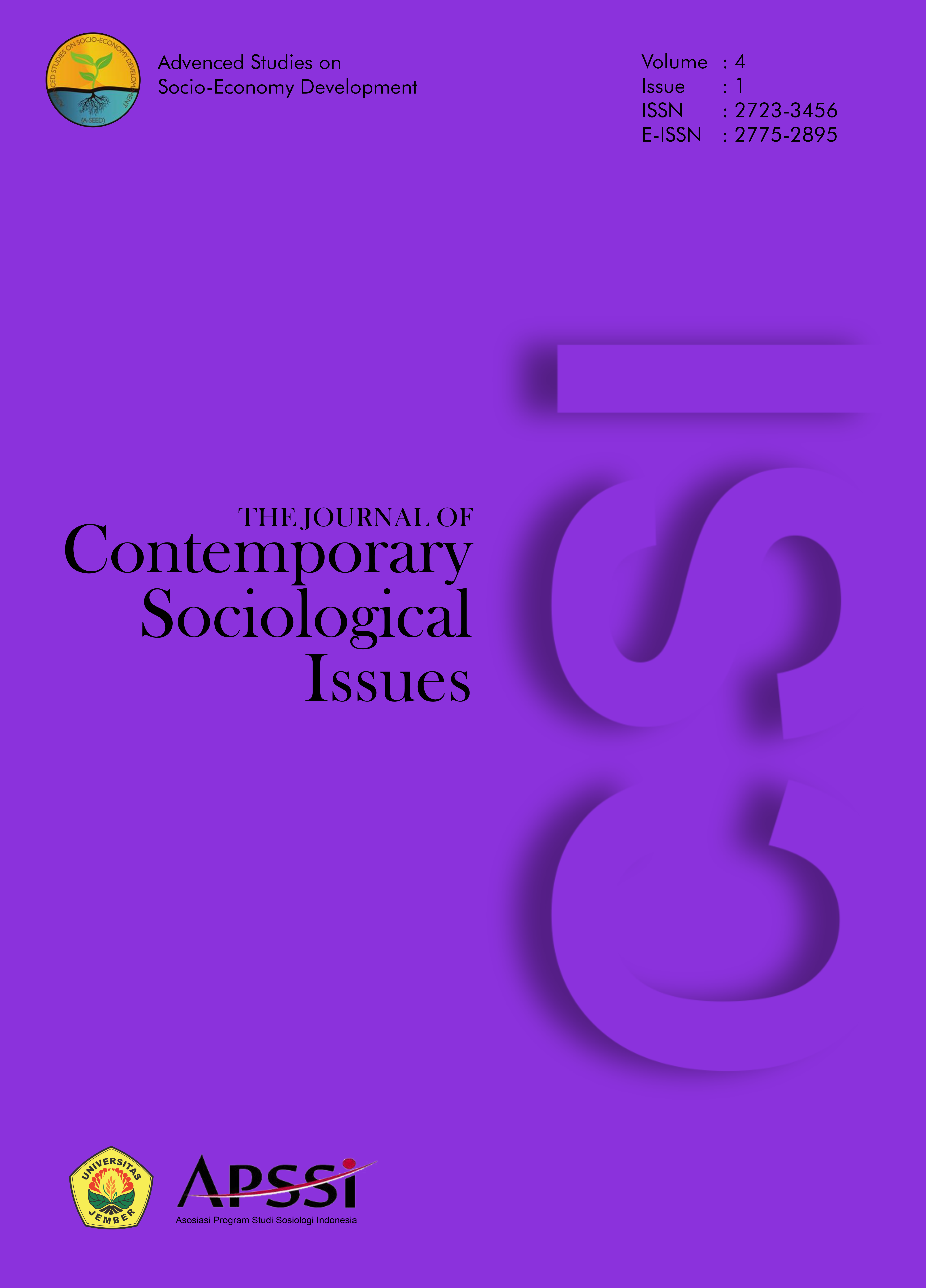The Successful of Strengthening ASEAN Centrality Through the ASEAN Way
Under the Indo-Pacific Strategy
DOI:
https://doi.org/10.19184/csi.v4i1.45089Abstract
Southeast Asia is a region with a strategic geographical location in global politics. History has proven that international political contestation occurred in this region from the era of colonialism at the end of the 16th century until no. This article explores how the Southeast Asian region is still a place of power rivalry and influence of major world powers such as China and the United States and, in the broader scope, the Indo-Pacific region. The research implemented Immanuel Kant's triangle of global politics and liberalism perspective to inquire into ASEAN countries' policy due to regional security and peacebuilding. It also uses literature study as a research method. The result indicates that ASEAN, established in 1967, has played a significant role in regional politics, especially in maintaining security and stability. The success of ASEAN is inseparable from the way ASEAN diplomacy with external partners by holding the principles and values believed by ASEAN member countries, known as the ASEAN Way. The values embodied in The ASEAN Way are vital to ASEAN's success Under The Indo-Pacific Strategy.
Keywords: ASEAN, ASEAN Way, Indo-Pacific, Geo-Politic, Regionalism
Downloads
References
Acharya, Amitav. Constructing a Security Community in Southeast Asia. London: Routledge, 2009.
Anthony, Mely Caballero. Regional Security in Southeast Asia: Beyond the ASEAN Way. Institute of Southeast Asian Studies, 2005.
Arbar, Thea Fathanah. “China: Strategi AS Picu Perpecahan Di Kawasan Indo-Pasifik,†May 23, 2022. https://www.cnbcindonesia.com/news/20220523141619-4-341098/china-strategi-as-picu-perpecahan-di-kawasan-indo-pasifik.
ASEAN. “ASEAN Outlook on the Indo-Pasific Final.†Accessed January 6, 2024. https://asean.org/asean2020/wp-content/uploads/2021/01/ASEAN-Outlook-on-the-Indo-Pacific_FINAL_22062019.pdf.
———. “Political Security Community.†ASEAN Main Portal Accessed. Accessed January 4, 2024. https://asean.org/our-communities/asean-political-security-community/ASEAN.
———. “The ASEAN Charter.†ASEAN, 2007. https://asean.org/asean/asean-charter/charter-of-the-association-of-southeast-asian-nations/.
Blomqvist, Hans. “ASEAN as a Model for Third World Regional Economic Co-Operation?†ASEAN Economic Bulletin 10, no. 1 (1993): 52–56.
Fujita, Masataka. “Can ASEAN Retain Centrality in Indo-Pacific Region? - From a GVC Point of View.†Journal of Contemporary East Asia Studies 10, no. 1 (January 2, 2021): 108–22.
Haruko, Wada. “The ‘Indo-Pacific’ Concept : Geographical Adjustments and Their Implications.†Working Paper. The RSIS Working Paper Series. Singapore: S. Rajaratnam School Of International Studies, 2020.
Indo-Pasific Economic Framework for Prosperity (IPEF). “United States Trade Representative (Ustr.Gov).†Indo-Pacific Economic Framework for Prosperity (IPEF). Accessed January 3, 2024. https://ustr.gov/trade-agreements/agreements.
Mahaseth, Harsh. “The Use of The ASEAN Way In Resolving Disputes.†Modern Diplomacy, June 22, 2022. https://moderndiplomacy.eu/2022/06/22/the-use-of-the-asean-way-in-resolving-disputes/.
Mason, Jennifer, Alan Bryman, and Bob Burgess. “Linking Qualitative and Quantitative Data Analysis.†In Analyzing Qualitative Data, 103–24. Routledge, 2002.
Michel, David, and Russel Sticklor. Indian Ocean Rising: Maritime Security and Policy Challenges. Washington D.C: Stimson, 2012.
Regional Comprehensive Economic Partnership (RCEP). “Member Countries.†Accessed January 3, 2024. https://www.studyiq.com/articles/ rcep-regional-comprehensive-economic-partnership.
Russet, Bruce. “Liberalism.†In International Relations Theories; Dicipline and Diversity, edited by Timothy Dunne, Milja Kurki, and Steve Smith, Third Edition. Oxford University Press, 2013.
Singh, Kavaljit. “The What, How and Why of the Indo-Pacific Economic Framework.†The Wire, 2022. https://thewire.in/economy/the-what-how-and-why-of-the-indo-pacific-economic-framework.
Tekunan, Susy. “The ASEAN Way: The Way to Regional Peace?†Jurnal Hubungan Internasional Universitas Pelita Harapan Jakarta 3, no. 2 (October 2014): 142–47.
Thepchatree, Prapat. “Expanding ASEAN’s Indo-Pacific Role,†2019. https://www.eastasiaforum.org/2019/08/15/.
United Nations. “UNCLOS.†Accessed January 6, 2024. https://www.un.org/depts/los/convention_agreements/texts/unclos/unclos_e.pdf.
Weatherbee, Donald, E. International Relations in Southeast Asia: The Struggle for Autonomy, ASEAN And Regionalism In Southeast Asia. Rowman & Littlefield Publishers, Inc, 2009.



